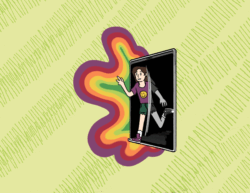Ask whether Georgetown is a diverse university and you’ll get a plethora of opinions, ranging from the University’s official stance—“a leader in promoting diversity among the most selective universities in the country,” according to the fact sheet —to the sense of self-segregation expressed by many students in a 2004 Diversity Action Council report.
While Georgetown should be praised for its efforts to tackle this issue, particularly in response to previous injustices against the LGBTQ community, the administration still has a long way to go to improve the raw numbers and Georgetown’s reputation as a school that lacks diversity.
Nearly one-third of Georgetown students come from a multicultural or minority background, according to a University press release.
We can debate whether this percentage is large enough—and it is significantly smaller than comparable institutions like Duke—but emphasis on this number alone ignores other aspects of diversity, especially economic diversity. Only 10 percent of Georgetown students receive Pell grants, which are used to measure economic diversity by U.S. News and World Report. That may be higher than some nearby schools like George Washington University or the University of Virginia, but it is still near the bottom of the pack. More important than the numbers, though, is the University’s image.
“If Georgetown has a reputation among elite schools … of the kind of students who shop on M Street, then that’s who it’s going to attract,” Hanna Lee, program director for the Center for Multicultural Equity and Access, said.
Georgetown does not have quotas, so its level of diversity depends on attracting qualified minority applicants. A barrier to increasing that pool, according to Jaime Briseño, the senior associate director of the undergraduate admissions office, is the image of Georgetown as a conservative Catholic institution.
This image is only worsened by Georgetown’s long-standing indifference towards LGBTQ students. It took a hate crime for the administration to change its mind on a LGBTQ resource center, but since then Georgetown has made an honest effort to erase the image of intolerance. Last year Georgetown sent a representative to the College Pride fair for LGBTQ high school students for the first time, according to Briseño.
If Georgetown is serious about improving diversity, it needs to expand opportunities for disadvantaged students by providing a significant boost to financial aid and improve the ties between the admissions office and minority outreach programs like CMEA. It can only attract and retain minority students by recruiting students from more diverse high schools, continuing to tackle its problems with intolerance and working to foster interaction among students in order to end self-segregation.




